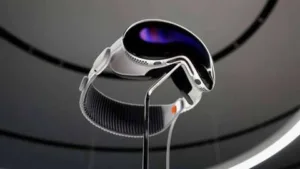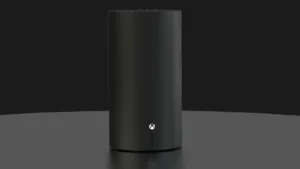Foe Review
To paraphrase the title cards at the beginning of Foe, we will soon live in a world where fresh water and habitable land are rare commodities. The latest drama from Lion director Garth Davis is supposed to be set in our immediate future, when, because of climate change, humans are forced to evacuate the planet they’ve destroyed. That’s a pretty urgent premise. It’s confounding, then, that Foe – based on the novel of the same name by Iain Reid and co-written by Davis and Reid – feels so alien. This supposedly timely film actually exists in another future entirely, where young lives are somehow untouched by technology or popular culture. Perhaps as a result, Foe’s characters are two-dimensional weirdos whose behavior defies explanation.
Foe opens in the year 2065, in an American Midwest that looks more like the Australian Outback. (No accident, since the film was shot in Davis’ native Australia.) Junior (Paul Mescal) and Hen (Saoirse Ronan) are a husband and wife in their mid-20s who live in Junior’s family farmhouse. When government agent Terrance (Aaron Pierre) shows up one night to conscript Junior into space colonization, the couple must confront the problems in their marriage.
That’s more or less the plot, anyway. Foe is so mired in symbolism and random crying jags that it ceases to really be about anything at all. Hen is clearly keeping something from Junior, but if you’re waiting for that revelation to clarify the rest of her actions, don’t bother. Terrance, Junior, and Hen don’t engage in any meaningful conversation, nor do they have any backstory, so we’re left to string their motivations together from flowery platitudes and ludicrous conduct.
Hen gets the worst of it, as poor Ronan is forced through melodramatic hoops like a show dog. Hen spends much of the film either in hysterics, playing the piano, or naked. She pontificates about whether we’re looking down or up at the sky and cries when her husband touches her boob. Yet Davis expects his audience to feel for a woman with such little substance. We don’t know where her or Junior’s families are, nor why this couple is so isolated. With little more to Hen than a penchant for music, sex, and trees, it’s hard to muster up empathy for all that wailing.
Terrance and Junior are similarly vague. These underwritten characters aren’t just hard to understand – they actively and repeatedly make choices that defy human norms. Take, for instance, Terrance constantly getting drunk and high with his charges, or the boob-touching incident. A predictable and unsatisfying reveal tries to justify some of this weirdness, like putting a Band-Aid on an amputation. The actors give it their all, but they’re doomed to look foolish.
Foe begs unfavorable comparisons to Black Mirror
Such vexing characters are at least at home in Foe’s peculiar setting. This is supposed to be our immediate future, yet the filmmakers must think a lot is going to change in the next 42 years. These characters act as if untouched by social media or the internet – or, in fact, any visual media at all. Their only cultural references are songs from old vinyl LPs. In 2065, apparently, there will be no screens at all, but there will be self-driving DeLoreans and hovercrafts. Solar panels will still be a thing, and factory farming will have reached terrifying new heights, yet metal syringes will be back in vogue.
As a result, Foe begs unfavorable comparisons to Black Mirror, a show that combines timeless aesthetics and urgent social commentary with far better results. The two have gorgeous cinematography, stacked casts, and big ideas in common, but Foe could never fit into one of Charlie Brooker’s punchy seasons. That would require this movie to have a cogent vision, a plot, or a point.











Post Comment